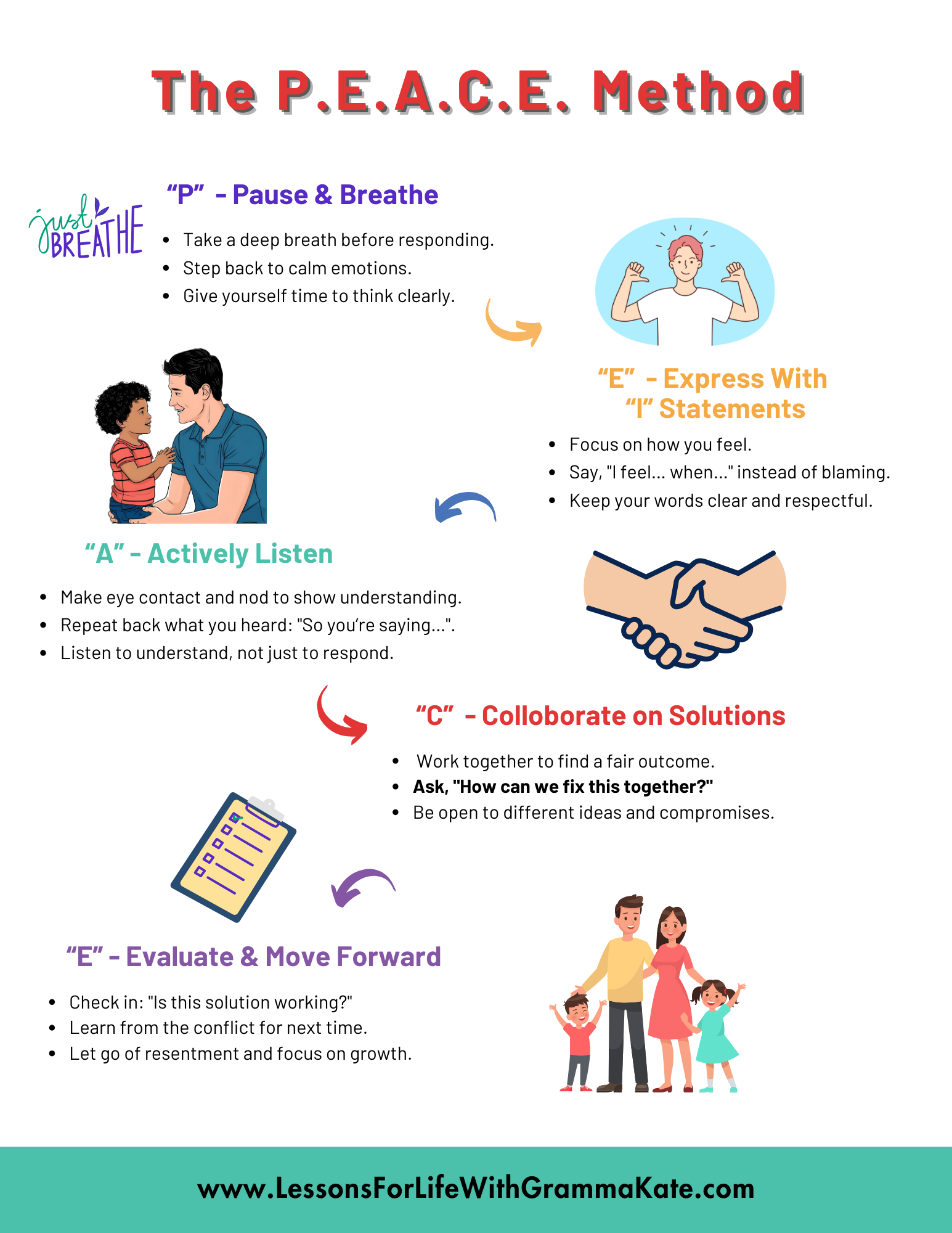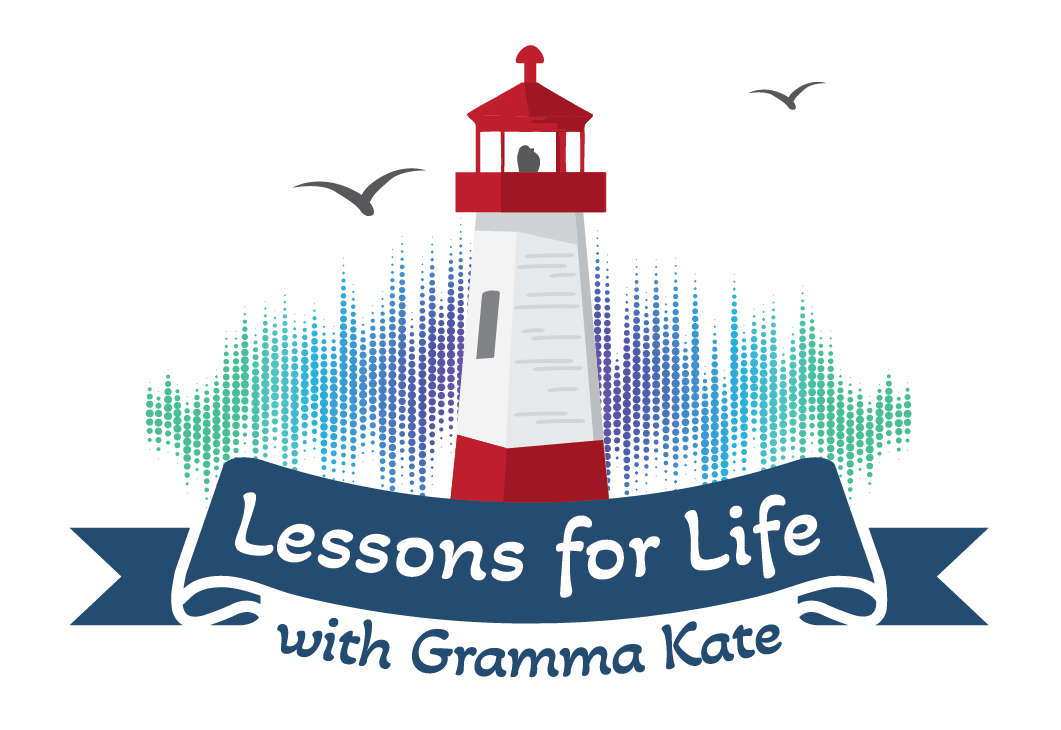
"I just don’t want to fight!" Have you ever said that? Maybe after a disagreement with a friend, a co-worker, or even your partner? I sure have more times than I care to remember. Arguing can feel like stepping barefoot onto a hidden Lego in the dark—uncomfortable and painful. Ouch! But what if I told you that arguing isn’t the problem—it’s how we communicate that makes all the difference?
Disagreements can strengthen relationships without damaging them when handled with effective communication. Let me tell you a quick story.
My friend Sarah and I have been close for years. This one time, she forgot about an important lunch date, leaving me sitting at the restaurant, checking my phone, wondering where she was. When she finally called—an hour later—she apologized, but I was hurt and angry. I had two choices: avoid the conflict and let resentment build or have an honest conversation. It’s so much easier to avoid conflict and live with resentment because then you can justify the hurt caused by the other person's actions. This time, I chose the second option. It wasn’t easy, but our friendship grew stronger in the end.
Arguing doesn’t have to damage relationships when handled with
effective communication. That’s why I’m sharing
5 easy tips for effective communication when arguing—so you can turn disagreements into opportunities for deeper understanding.

Conflict Resolution Definition
Conflict resolution is about finding a calm and fair way to resolve a disagreement. It requires listening carefully, considering different points of view, and working together to reach an agreement. Imagine trying to untangle a knot in your shoelaces—you have to be patient and gentle, so you don’t make the situation worse.
Conflicts can happen in any relationship—at home, work, school, or even in line at the grocery store. But they don’t have to lead to hurt feelings or broken connections.
When handled well, conflict can bring people closer together.
Why Conflict Resolution Is Important
Many people see conflict as bad, but it’s a necessary part of healthy relationships. Imagine never expressing your thoughts or feelings to keep the peace. That would be like shaking a soda can and expecting it not to explode!
When we positively resolve conflicts, we:
- Build trust – Facing disagreements head-on shows others we respect and care about their feelings, reassuring them that their thoughts and emotions are valued.
- Improves communication – When we learn to express ourselves clearly and listen to others, it foste a deeper understanding and reduces misunderstandings.
- Strengthen relationships – Working through problems together deepens our connections, creating a stronger emotional bond and reinforcing mutual support.
- Reduce stress – Avoiding conflict creates tension, but resolving it relieves it, allowing us to move forward with peace and closure.
- Model healthy behaviours for our kids – Children learn by watching how we handle disagreements, equipping them with essential skills for navigating relationships in their own lives.
Conflict resolution is like exercising a muscle—the more we practice, the stronger we get at it.

Common Challenges That Block Effective Communication During an Argument
Even when we know that resolving conflict is essential, it can still be tricky.
Here are some common challenges and how to handle them:
Our emotions take over.
- When emotions run high, it’s easy to say things we regret. If you feel overwhelmed, take a deep breath and step away before responding.
We fear confrontation.
- Many people avoid conflict because they fear anger or rejection. However, silence often makes things worse. To keep the conversation open and non-blaming, start with "I feel" statements instead of "You did this."
We stop listening to the other person.
- Conflict resolution isn’t just about talking—it’s about active listening. Try paraphrasing what the other person said to make sure you understand their perspective.
We want to ‘win’ the argument.
- Conflict isn’t about winning or losing; it’s about finding a solution that works for both people. Instead of focusing on proving a point, focus on understanding each other.
We avoid the issue.
- Ignoring a problem will not make it disappear. The longer you wait, the harder it will be to resolve. Address conflicts early before they become bigger issues.
How Active Listening Improves
Effective Communication
One of the biggest mistakes people make during conflicts is listening to respond instead of listening to understand. When emotions run high, we may interrupt, assume, or prepare a defence rather than truly hearing the other person. That’s where active listening comes in.
Active listening means paying close attention to the person speaking, showing that you understand them, and responding thoughtfully. It’s a key part of assertive communication because it ensures that both people feel heard and respected.
Here’s how to practice active listening:
- Make eye contact and focus – Put away distractions and give the speaker your full attention.
- Reflect and paraphrase – Repeat what you heard to confirm understanding: "It sounds like you're upset because you felt left out. Is that right?"
- Ask open-ended questions – Encourage deeper conversation by asking, "Can you tell me more about why you feel that way?"
- Validate emotions – Acknowledge the other person’s feelings without judgment: "I see why that upset you. That makes sense."
- Avoid interrupting – Let the person finish speaking before you respond.

Assertive Communication & Active Listening: The Perfect Pair
Last week, we talked about assertive communication, which is all about expressing yourself clearly while respecting others. Active listening supports this by helping us:
✅ Respond thoughtfully instead of reacting emotionally.
✅ Ensure we fully understand the other person’s perspective before speaking.
✅ Show respect, which encourages the other person to listen in return.
When we communicate effectively and listen, we can solve problems that strengthen relationships instead of harming them. It’s not just about getting our point across—it’s about creating an open and respectful dialogue where both people feel valued.
7 Simple Ways to Teach Your Kids
Conflict Resolution
- Name the emotions.
Help kids recognize and express their feelings to communicate their needs instead of acting out. For example, you can say, "I see you’re frustrated because your brother took your toy. Let’s talk about it." When kids can name their emotions, they are better equipped to manage them instead of letting them take over. - Practice ‘I’ statements.
Instead of blaming, teach them to say, "I feel upset when you take my toy without asking." “I” statements help kids take ownership of their feelings without putting the other person on the defensive. Over time, this skill teaches them to express themselves clearly while keeping the conversation open and constructive. - Encourage problem-solving.
Ask questions like, "What do you think would be a fair solution?" Problem-solving helps kids shift their focus from the problem to finding a solution. It also teaches them empathy by encouraging them to consider how their actions affect others. - Use role-playing.
Act out common conflicts and guide kids in finding solutions. For example, pretend one child took a toy without asking and let the other practice using ‘I’ statements and coming up with a resolution. When kids practice in a low-stress setting, they feel more confident applying these skills in real life. - Praise good conflict resolution.
When kids resolve a disagreement calmly, acknowledge it with specific praise. "I noticed how you and your friend worked out that problem together—great job!" Positive reinforcement encourages kids to keep using these skills and builds their confidence in handling conflicts independently. - Model it yourself.
Show kids how to disagree respectfully with others. If they see you handling conflict with patience and kindness—whether with a partner, friend, or even a store clerk—they’ll learn that disagreements don’t have to be negative. Instead, they can be opportunities for growth and deeper understanding. - Teach the power of taking a break.
Sometimes, emotions run high, and the best thing to do is take a moment to calm down before discussing the issue. Encourage kids to say, "I need a minute to cool down before we talk about this." Teaching them that it’s okay to step away when overwhelmed prevents emotional outbursts and helps them return to the conversation with a clearer mind.
By teaching kids these conflict resolution skills, we’re giving them tools they’ll use for a lifetime. They'll grow up knowing how to express themselves, work through disagreements, and build healthy, lasting relationships. While we can teach kids conflict resolution skills, it’s just as essential for us to practice them ourselves. That’s where the
P.E.A.C.E. method comes in—a simple, five-step approach to handling disagreements with understanding and respect.
Try these 5 Easy Tips for
Effective Communication When Arguing

In the heat of the moment, conflict can feel overwhelming. When emotions flare, reacting without thinking is easy—raising your voice, shutting down, or saying something you’ll regret. But before you respond, take a breath and remember P.E.A.C.E. This simple, five-step method helps you slow down, refocus, and approach conflict with understanding and respect. Instead of seeing disagreements as battles to win, consider them opportunities to make P.E.A.C.E. and strengthen relationships.
P.E.A.C.E. – A Simple Way to Resolve Conflict
- Pause and Breathe—When emotions run high, our first instinct is often to react. But taking a deep breath before responding can make all the difference. Pausing lets you calm your emotions and approach the situation clearly rather than saying something you regret.
- Express with "I" Statements. Instead of blaming the other person, focus on your feelings and needs. Saying, "I feel frustrated when I get interrupted because I want to finish my thought," is more effective than saying, "You never let me talk!" “I” statements keep the conversation open instead of escalating tension.
- Actively Listen – Good conflict resolution isn’t just about talking—it’s about listening too. Show the other person that you’re paying attention by making eye contact, nodding, and paraphrasing what they said: "So you’re feeling unheard because I interrupted you?"
- Active listening helps both sides feel understood.
- Collaborate on Solutions – Conflict isn’t about winning or losing; it’s about finding a fair solution. Ask, "What can we do to make this better?" or "How can we fix this together?" Collaboration encourages teamwork rather than competition, creating a stronger, more respectful relationship.
- Evaluate and Move Forward – After resolving the conflict, check in later to ensure the solution works. Growth comes from learning how to handle conflicts better next time. A simple follow-up, like "Hey, I appreciate how we worked through that. Are we good?" can reinforce positive communication habits.
By following P.E.A.C.E., we can handle conflicts in a way that builds trust, strengthens relationships, and teaches kids (and ourselves) how to navigate disagreements with respect. The more we practice, the more natural it becomes.
Conclusion
Conflict is an inevitable part of life, but it doesn’t have to be destructive. When handled with patience, communication, and understanding, it becomes an opportunity to build trust, deepen relationships, and teach valuable life skills to our children. We’ve explored the importance of conflict resolution, the power of active listening, and simple ways to model these skills for kids. And now, with the P.E.A.C.E. method, you have a simple, step-by-step approach to confidently navigating disagreements.
So the next time you find yourself in a disagreement, remember these
5 easy tips for effective communication when arguing. When you use the P.E.A.C.E. method, you turn disagreements into opportunities for growth, trust, and deeper connection. The more you practice, the more natural it becomes. So instead of fearing conflict, embrace it as a chance to practice effective communication—because that strengthens relationships.
"Remember, change begins with ourselves.
Put your knowledge into action and reach your full potential ."
Wishing you heartfelt warmth
and support on your parenting journey!
Kate/Gramma Kate
Wish Setting Boundaries Was Easier?
Grab your FREE 7-day guide and create boundaries that bring you peace and balance!
All Rights Reserved | Cathy Barker
Site Designed and Developed by Client First Web Design & Graphics
